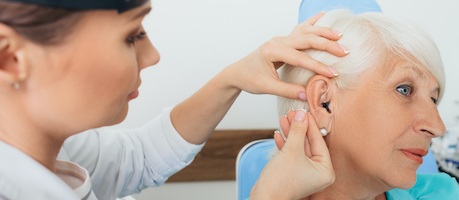There are three types of sleep apnea:
Central sleep apnea (CSA) happens when the central nervous system, or the brain, is not sending appropriate signals to the muscles of respiration resulting in an absence of respiratory effort. CSA can be associated with other breathing patterns such as Cheyne-Stokes breathing seen in heart failure and atrial fibrillation.
Obstructive sleep apnea (OSA) occurs when your body is trying to breathe, however, the muscles of respiration collapse or obstruct, preventing airflow to your lungs. When there is complete loss of airflow, it is called apnea, and when there is partial loss of airflow, it is called hypopnea.
Mixed sleep apnea is when there is a combination of both CSA and OSA.
Symptoms
Symptoms for sleep apnea can vary person to person and can depend on severity. Some patients have disrupted sleep where they wake up frequently during the night unintentionally, or daytime symptoms including drowsiness or fatigue. Other common symptoms include morning headaches, depression, urge to take a nap during the day, forgetfulness, and irritability. Some patients do not have any of these symptoms but their sleeping partners may notice that they snore heavily with pauses and breaks in breathing or gasping.Sleep apnea can also have long term side effects if not treated including conditions such as strokes, insulin resistance/diabetes, high blood pressure, atherosclerosis, and cognitive impairment.
Diagnosis
Sleep apnea is diagnosed by a polysomnography, also called a sleep study. Sleep studies are a comprehensive tool to assess for multiple factors of your sleep including brain waves, blood oxygen level, heart rate, breathing rate, eye and leg movements, and body position. Some sleep studies can be performed at home but with a bit more limited information.Degree of obstructive sleep apnea is typically based on an apnea-hypopnea index (AHI) which indicates how often you have apnea/hypopneas an hour. AHI score of less than 5 is normal, 5-15 is mild, 15-30 is moderate, and above 30 is severe.
Cause
There is no one cause for obstructive sleep apnea. However, there are multiple factors that may put you at higher risk for OSA. Family history of OSA, obesity, thick neck, nasal congestion/obstruction, smoking, thyroid dysfunction are some common factors that may contribute to developing OSA.Treatment
Once you have been diagnosed with OSA, treatment is usually recommended. The gold standard for treatment of OSA is positive airway pressure (PAP) therapy. This is a common treatment option that is prescribed by your PCP or Sleep Medicine doctor. Other medical options include weight loss with dietary and lifestyle modifications, positional therapy, oral appliances, and other devices such as nasal strips, chin straps, and more, depending on your anatomy and nature of your OSA.For moderate to severe OSA, surgery can be an option. Otolaryngologists can evaluate your airway in the office or with sedation, to determine where your level of airway obstruction is the most severe and would most likely improve after surgery.
Another surgical option includes hypoglossal nerve stimulator, or INSPIRE. INSPIRE is an FDA approved device placed during an outpatient surgery.







